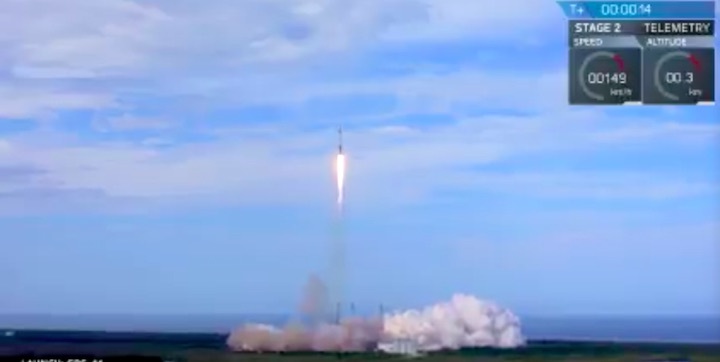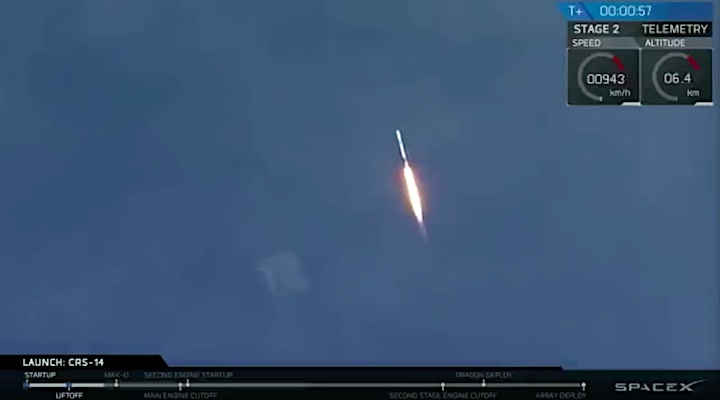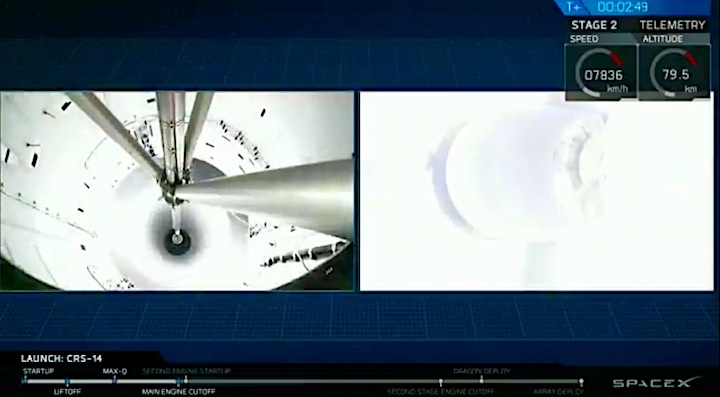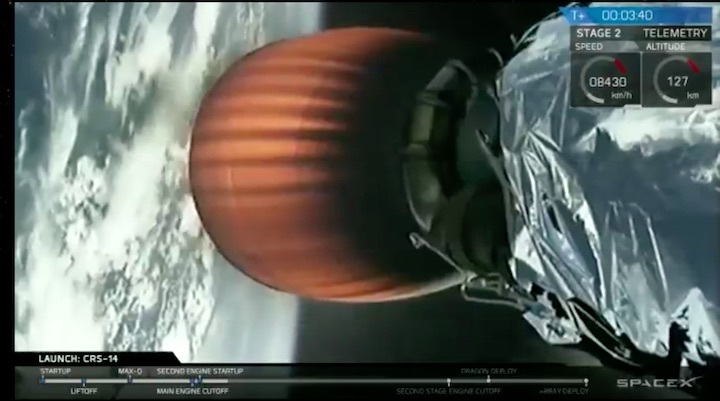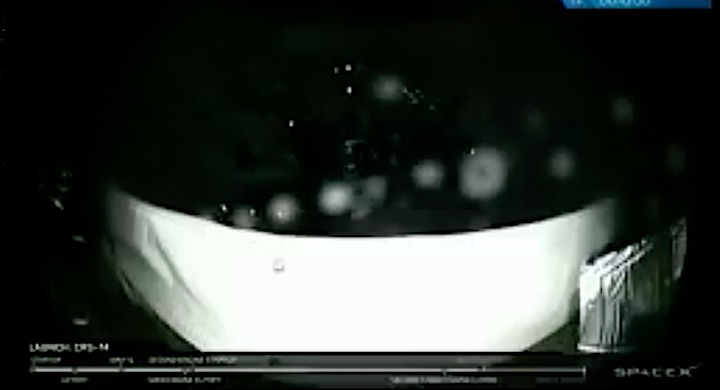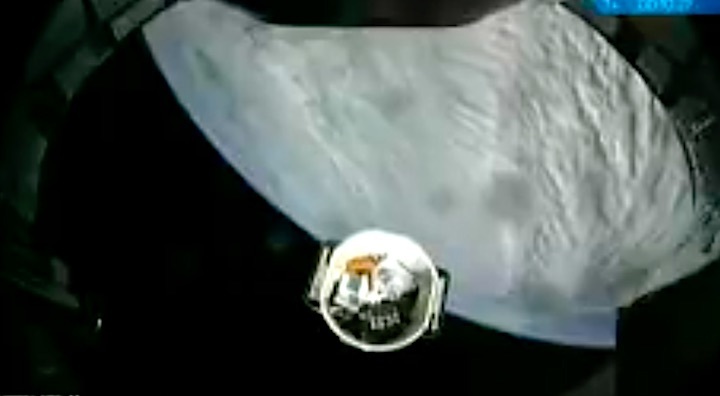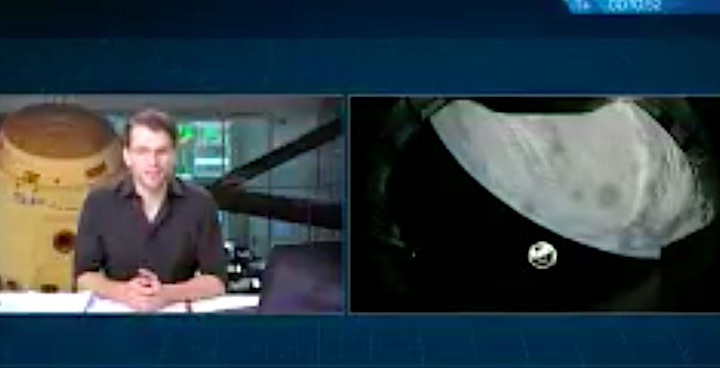15.03.2018
NASA will host a media teleconference at 11 a.m. EDT Monday, March 19, to discuss a number of science investigations and instruments launching in April to the International Space Station on the next SpaceX commercial resupply mission. Audio of the teleconference will stream live on NASA’s website.
To participate in the teleconference, media must contact Stephanie Schierholz at 202-358-1100 or stephanie.schierholz@nasa.gov by 5 p.m. Friday, March 16, for dial-in information.
Pete Hasbrook, associate program scientist for the International Space Station Program at NASA’s Johnson Space Center, and Michael Roberts, deputy chief scientist at the Center for Advancement of Science in Space (CASIS), will kick off the call with an overview of the research and technology aboard SpaceX’s Dragon spacecraft.
Also participating in the briefing will be:
- Torsten Neubert, National Space Institute at the Technical University of Denmark – Neubert, principal investigator for the Atmosphere-Space Interactions Monitor (ASIM), will discuss how this Earth observatory will study severe thunderstorms and their role in the Earth’s atmosphere and climate. In addition to space applications, ASIM will help improve current atmospheric models that guide long- and short-term climate predictions.
- Stephanie Murphy and Mark Gittleman, Alpha Space Test and Research Alliance – Murphy, founder of Alpha Space, and Gittleman, the company’s president and chief executive officer, will discuss Alpha Space’s Materials International Space Station Experiment flight facility (MISSE-FF). MISSE will be permanently installed on the exterior of the orbiting laboratory and provide the ability to test materials, coatings, and components in the harsh environment of space, with flight opportunities for experimenters approximately every six months. Testing on MISSE may benefit a variety of industries, including advanced manufacturing of products ranging from protective clothing for astronauts to solar cells.
- Kim de Groh, NASA’s Glenn Research Center – De Groh, a senior materials research engineer, will talk about how exposing 138 polymer and composite samples to the space environment, via MISSE-FF, will provide critical data to improve predictions of materials durability for spacecraft and component lifetimes in low-Earth orbit.
- Elaine Horn-Ranney, Tympanogen, Inc. – Principal investigator for research about wound healing, Horn-Ranney will discuss this investigation into improving the process of antibiotic release from gels that can cover large wounds, a medical advancement that could be used to treat military combat wounds and reduce the occurrence and severity of systemic infection and inflammation.
- Randall German, San Diego State University – German will discuss the Gravitational Effects on Distortion in Sintering (of Metal Powders) experiment delivered in the NASA Sample Cartridge Assembly that seeks to better understand how the lack of gravity affects a process used to produce high-performance products from metal powders. This research could lead to improved manufacturing techniques and has potential as a way to perform in-space fabrication and repair.
- Dr. Guy Trudel, University of Ottawa and The Ottawa Hospital in Ontario – Trudel, a physician and principal investigator for the MARROW study, will discuss an investigation that looks at the effect of microgravity on bone marrow, blood cells produced in marrow, recovery after space missions, and the application of this data to future space explorers as well as healthcare providers on Earth.
SpaceX is targeting no earlier than 4:30 p.m. April 2 for the launch of its Dragon spacecraft on a Falcon 9 rocket from Space Launch Complex 40 at Cape Canaveral Air Force Station in Florida.
Quelle: NASA
---
Update: 20.03.2018
.
A Dragon spacecraft scheduled to launch into orbit no earlier than April 2, carries the 14th SpaceX commercial resupply mission to the International Space Station for NASA. Lifted into orbit atop a Falcon 9 rocket from Cape Canaveral Air Force Station in Florida, Dragon takes supplies, equipment and scientific research to crew members living and working aboard the station.
This flight delivers scientific investigations looking at severe thunderstorms on Earth, the effects of microgravity on production of high-performance products from metal powders, and growing food in space. Dragon also carries cargo for research in the National Laboratory, operated by the Center for the Advancement of Science in Space (CASIS), including testing the effects of the harsh space environment on materials, coatings and components; identifying potential pathogens aboard the station; and investigating an antibiotic-releasing wound patch.
Highlights of research to be delivered to the station include:
Capturing Sprites and Elves
The Atmosphere-Space Interactions Monitor (ASIM) surveys severe thunderstorms in Earth’s atmosphere and upper-atmospheric lightning, or transient luminous events, from its perch on the exterior of the European Space Agency (ESA) Columbus module. These include sprites, flashes caused by electrical break-down in the mesosphere; the blue jet, a discharge from cloud tops upward into the stratosphere; and ELVES, concentric rings of emissions caused by an electromagnetic pulse in the ionosphere.
ASIM advances understanding of the effect of thunderstorms on Earth’s atmosphere, helping to improve atmospheric models and meteorological and climatological predictions. It also contributes to understanding the effect of dust storms, urban pollutants, forest fires, and volcanoes on cloud formation, as well as electrification and intensification of hurricanes and their relation to eye-wall lightning activity.
Metal Powder Fabrication
The NASA Sample Cartridge Assembly (MSL SCA-GEDS-German) experiment determines underlying scientific principles for a fabrication process known as liquid phase sintering, in microgravity and Earth-gravity conditions.
On earth, liquid phase sintering works like building a sandcastle with just-wet-enough sand; heating a powder forms interparticle bonds and formation of a liquid phase accelerates this solidification, creating a rigid structure. But in microgravity, settling of powder grains does not occur and larger pores form, creating more porous and distorted samples than Earth-based sintering. Sintering has diverse applications on Earth, including in metal cutting tools, automotive engine connecting rods, and self-lubricating bearings. It has potential as a way to perform in-space fabrication and repair, such as building structures on the moon or creating replacement parts during extraterrestrial exploration.
Testing Materials in Space
The Materials ISS Experiment Flight Facility (MISSE-FF) provides a unique platform for testing how materials, coatings, and components react in the harsh environment of space, which includes exposure to ultraviolet and ionizing radiation, atomic oxygen, charged particles, thermal cycles, electromagnetic radiation, and micro-meteoroids.
A continuation of previous MISSE payloads, MISSE-FF’s new design eliminates the need for Extravehicular Activities (EVA) for these investigations. The platform will be extracted from Dragon’s trunk and installed on the EXPRESS Logistics Carrier ELC2 by the Canadarm2 robotic arm. MISSE-FF’s new technology includes power and data collection options and the ability to take pictures of each sample on a monthly basis, or more often if required, allowing scientists to monitor sample status throughout flight. The testing benefits a variety of industries, including automotive, aeronautics, energy, space, and transportation.
Patching up Wounds
NanoRacks Module 74 Wound Healing (Wound Healing) tests a patch containing an antimicrobial hydrogel that promotes healing of a wound while acting as a scaffold for regenerating tissue. Reduced fluid motion in microgravity allows more precise analysis of the hydrogel behavior and controlled release of the antibiotic from the patch.
This novel patch could serve as a non-surgical treatment for military combat wounds and reduce sepsis, or systemic inflammation, usually caused by contamination of an open wound. Currently, no wound dressing can sustain release of antibiotics or other agents directly to the wound site while simultaneously maintaining the structural integrity necessary for successful wound healing.
Drug Development in Space
Comparative Real-time Metabolic Activity Tracking for Improved Therapeutic Assessment Screening Panels (Metabolic Tracking) examines effects of microgravity on the metabolic impact of five different therapeutic compounds, evaluating the use of autobioluminescent human tissue culture for continuous tracking of metabolic activity without destroying the sample. This investigation determines the feasibility of developing improved pharmaceuticals in microgravity using a new method to test the metabolic impacts of drug compounds. This could lead to more effective, less expensive drugs.
These investigations are just a sample of the new science to be conducted aboard the orbiting microgravity laboratory. Follow @ISS_Research for more information about science happening on station.NASA Television to Air Launch of Next Space Station Resupply Mission

NASA commercial cargo provider SpaceX now is targeting its 14th resupply mission to the International Space Station for no earlier than 4:30 p.m. EDT Monday, April 2. Live coverage will begin on NASA Television and the agency’s website Sunday, April 1, with pre-launch events.
Packed with almost 5,800 pounds of research, crew supplies and hardware, the SpaceX Dragon spacecraft will launch on a Falcon 9 rocket from Space Launch Complex 40 at Cape Canaveral Air Force Station in Florida. About 10 minutes after launch, Dragon will reach its preliminary orbit, at which point it will deploys its solar arrays and begins a carefully choreographed series of thruster firings to reach the International Space Station.
Grapple and berthing to the space station is targeted for April 4. Expedition 55 Flight Engineers Norishege Kanai of the Japan Aerospace Exploration Agency, backed up by NASA astronaut Scott Tingle, will supervise the operation of the Canadarm2 robotic arm for Dragon’s capture. After Dragon capture, ground commands will be sent from mission control in Houston for the station’s arm to rotate and install it on the bottom of the station’s Harmony module.
Full mission coverage is as follows:
Sunday, April 1
- 2:30 p.m. – What’s on Board science briefing, from NASA’s Kennedy Space Center in Florida. This briefing will highlight the following research:
- Dan Close, chief scientific officer at 490 BioTech, will discuss the company’s Metabolic Tracking investigation to evaluate the use of a new method to test, in microgravity, the metabolic impacts of pharmaceutical drugs. This could lead to more effective, less expensive medicines on Earth.
- Torsten Neubert of the National Space Institute at the Technical University of Denmark, and principal investigator for the Atmosphere-Space Interactions Monitor, will discuss how this Earth observatory will study severe thunderstorms and their role in the Earth’s atmosphere and climate.
- The Multi-use Variable-g Platform (MVP), developed, owned and operated by Techshot Inc., will serve as a new test bed aboard the space station, able to host 12 separate experiment modules with samples such as plants, cells, protein crystals and fruit flies. Rich Boling, vice president for corporate advancement at Techshot, will discuss the platform, and Sharmila Bhattacharya, a senior scientist at NASA’s Ames Research Center, will talk about the value of the research that will be conducted on it.
- Howard Levine, chief scientist in the Utilization and Life Science Office at NASA’s Kennedy Space Center, will discuss continuing research on growing food in space, as the Veggie Passive Orbital Nutrient Delivery System experiment tests a new way to deliver nutrients to plants.
- 4 p.m. – Prelaunch news conference at Kennedy with representatives from NASA’s International Space Station Program, SpaceX and the U.S. Air Force’s 45th Space Wing.
Monday, April 2
- 4 p.m. – Launch coverage begins for the 4:30 p.m. launch
- 6:30 p.m. – Postlaunch news conference at Kennedy with representatives from NASA’s International Space Station Program and SpaceX.
Wednesday, April 4
- 5:30 a.m. – Dragon rendezvous and capture. Capture is scheduled for 7 a.m.
- 8:30 a.m. – Dragon installation to the nadir port of the Harmony module of the station
The Dragon spacecraft will spend approximately one month attached to the space station, returning to Earth in May with results of completed experiments.
The deadline for media to apply for accreditation for this launch has passed, but more information about media accreditation is available by emailing ksc-media-accreditat@mail.nasa.gov.
Quelle: NASA
---
Update: 28.03.2018
.
ASIM IN DRAGON
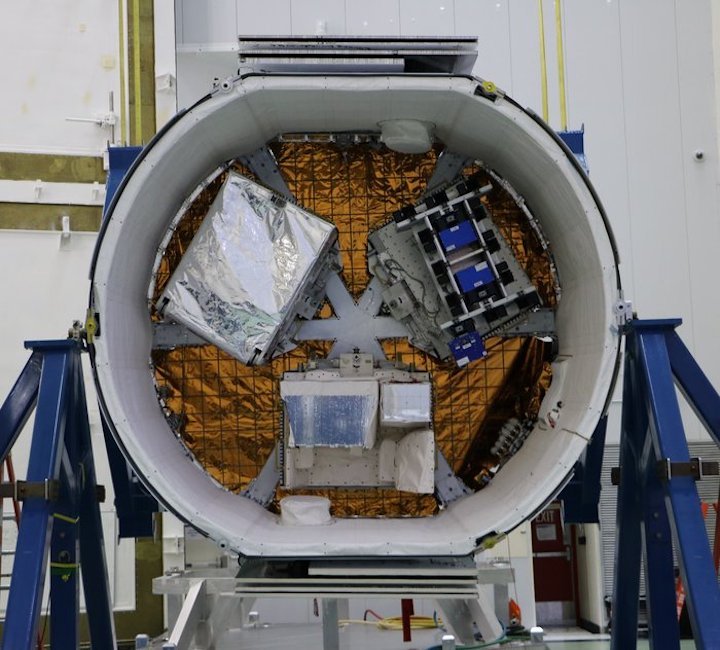
-
ESA’s Atmosphere-Space Interactions Monitor (ASIM), the centre-bottom box in this image, is seen here after its installation in SpaceX Dragon’s open cargo carrier ahead of next week’s launch. On 2 April, a Falcon 9 rocket will deliver this instrument to the International Space Station to begin its mission of chasing down elusive electrical discharges in the atmosphere.
For years, their existence has been debated: elusive electrical discharges in the upper atmosphere were reported by pilots, but these ‘transient luminous events’, also known as red sprites, blue jets, and elves, are difficult to study because they occur above thunderstorms.
Satellites have probed them and observations have even been made from mountain tops but their viewing angle is not ideal for gathering data on large scales.
Then, in 2015, ESA astronaut Andreas Mogensen managed to record many kilometre-wide blue flashes around 18 km altitude, including a pulsating blue jet reaching 40 km from the International Space Station. A video recorded by Andreas as he flew over the Bay of Bengal at 28 800 km/h shows the electrical phenomena clearly – a first of its kind.
The Space Station’s low orbit proved again to be the vantage point from which a large part of Earth along the equator could be observed and these sprites and jets could be captured.
Researchers want to investigate the relationship between terrestrial gamma-ray bursts, lightning and high-altitude electric discharges across all seasons by tracking and collecting data continuously for at least two years.
Aside from being a little-understood phenomenon and part of our world, these powerful events can reach high above the stratosphere and have implications for how our atmosphere protects us from space radiation.
ASIM is an international project funded by ESA in close collaboration with NASA and is led by a team of scientists from the National Space Institute of the Danish Technical University (DTU Space).
Quelle: ESA
---
Update: 31.03.2018
.















